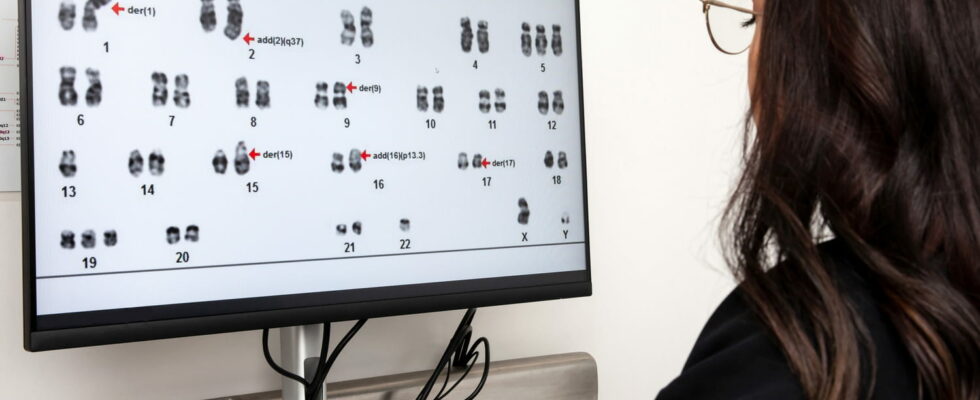“The fact that there are cells that do not carry trisomy 21 leads to more favorable development.”
We know trisomy 21, minus the term “mosaic” trisomy. We speak of “trisomy” when there is an extra chromosome in the body. An individual normally has 46 chromosomes (22 pairs + XX or XY (depending on sex)). In the case of Down syndrome, the individual has three chromosomes instead of two in a pair (most often pair 21), therefore 47 chromosomes.
The origin of trisomy lies either at the time of meiosis, the process which results in the formation of reproductive cells, or during the first divisions of the zygote, after fertilization. It is a constitutional chromosomal anomaly causing abnormalities of embryofetal development. It causes variability of signs from one person to another. “Some people will have heart defects or thyroid problems, others will have language difficulties or even more or less significant intellectual development difficulties. There is great variability in the importance of the signs that the person presents”explains Dr Damien Sanlaville, head of the genetics department at Lyon University Hospital.
Concerning Down syndrome, there are three forms:
► “homogeneous free” Down syndrome: it affects 95% of people with Down syndrome. “In this case there are three chromosomes in all the cells of the organism”continues Dr. Sanlaville.
► “translocation” trisomy: it represents 2 to 3% of cases. “In this case, the third chromosome 21 is stuck on another chromosome.”
► “mosaic” trisomy: it also represents 2 to 3% of cases. “We speak of mosaic trisomy 21 when cells with 47 chromosomes, including 3 chromosomes 21, coexist with (normal) cells with 46 chromosomes, having 2 chromosomes 21”explains Dr Clotilde Mircher, geneticist and head of the consultation department at the Jérôme Lejeune Institute. This is what we call a “coexistence” of cells with trisomy 21 and cells without trisomy 21. “The concept of mosaic means that the individual is made up of cells which have differences in their genetic makeup. This will result in two cell populations“, specifies Dr Sanlaville. Mosaic trisomy also exists for other chromosomes, “we can have trisomies 18, 13… in mosaic”according to Dr. Sanlaville. “But few of these forms are viable” adds Dr. Mircher.
“A more favorable development”
Mosaic trisomy can be detected using a karyotype analysis, which is a mapping of the chromosomes. “This analysis can be done before birth by a puncture of amniotic fluid or a biopsy of the placenta, or after birth by taking blood from the baby”tells us Dr. Mircher. Another test, non-invasive prenatal screening, consists of taking blood from the mother during pregnancy, to analyze the circulating DNA of the fetus. It is effective in detecting Down syndrome but the reliability is less if the mosaic is weak.
It is very difficult to know what the clinical impact of mosaic Down syndrome will be, it all depends on the rate of mosaicism: low or high. “The fact that there are cells that do not carry Down syndrome leads to more favorable development. When more than 50% of the cells have Down syndrome, people generally have the same signs (physical, physiological, intellectual, editor’s note ) than people who have complete Down syndrome When there is less than 50%, people have a more favorable development. For example, people who have mosaic Down syndrome at 10% have more favorable intellectual development. fewer medical complications”concludes Dr Sanlaville.
